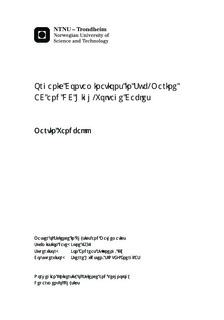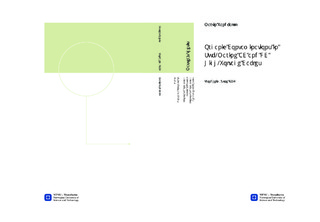| dc.description.abstract | In dielectric insulating materials subjected to alternating electric fields there are energy losses associated with polarization mechanisms and resistivity. A typical dielectric material used for insulation of high voltage sub-marine cables is cross-linked polyethylene (XLPE) produced from polyethylene (PE). Under production, PE can stagnate in high temperature thermal zones and consequently be subjected to thermal oxidation that introduces polar carbonyl groups to the polyethylene chain, which leads to increased energy losses, inferior insulating properties and subsequent degradation and eventually breakdown and failure of the cable.The oxidized polyethylene can contaminate the insulating material in the form of microscopic particles embedded in the material, that are difficult to detect and separate from the polyethylene granulate. In this work the focus have been on documenting the fundamental properties of the oxidized XLPE contaminations, such as complex permittivity, associated energy losses and breakdown strengths, compared to that of un-oxidized XLPE.In this thesis the thermal oxidation process of XLPE and PE has been studied in order to determine the degree of oxidation and carbonyl contents, using Fourier transform infra red spectroscopy. Three real contaminations was found, investigated and categorized. The contaminations was replicated through thermal oxidation of XLPE samples in a ventilated heat cabin at 170˚C.The electrical properties of replicated contaminations has been investigated using dielectric spectroscopy and breakdown strength-tests. At 50Hz the real relative per- mittivities is measured to be ε' = 2.30 for un-oxidized XLPE, ε' = 2.57 for category 1 samples, ε' = 2.72 for category 2 samples and ε' = 4.19 for category 3 samples.The lossy polarization process is characterized by the imaginary part of the permittivity ε''. It is seen that the dielectric losses are indeed increasing with the presence of polar carbonyl group, as expected from theoretical considerations. It is also seen that ε'' in oxidized samples increases as the frequency decreases, which indicates that the conductive process dominates the low frequency domain, and that the DC conductivity is higher in contaminations than in un-oxidized XLPE. Break- down tests was preformed using the ASTM D149 standard for dielectric breakdown testing.It was observed a decrease in breakdown strength in oxidized XLPE. The breakdown strengths decreased from (55.31±31)kV/mm in un-oxidized XLPE to (24.07±12.88) kV/mm in the most oxidized category 3 XLPE sample.As a consequence of the theories and experimental results presented in this work, it can be said that there is a causal relation between dielectric losses and breakdown strengths in oxidized XLPE material which can be sumerized as follows: The intro- duction of polar carbonyl groups through thermal oxidation to polyethylene causes increased permittivities and dielectric losses. Subsequently there will be a decrease in electric breakdown strength of the XLPE insulation. Contaminations of oxidized material embedded in a solid insulation system may pose a reliability issue and may eventually be the cause of breakdown and failure of the cable. | nb_NO |

